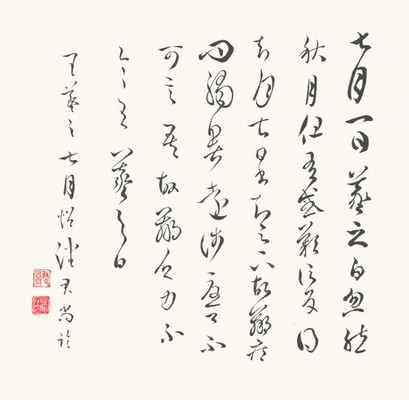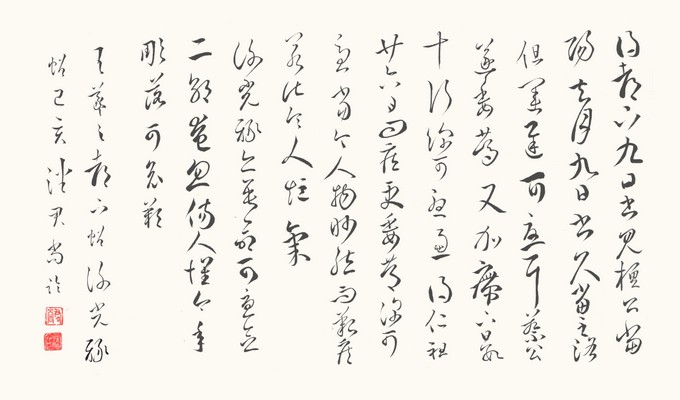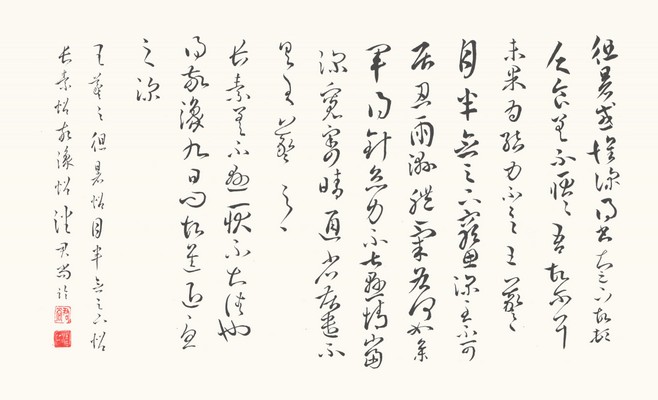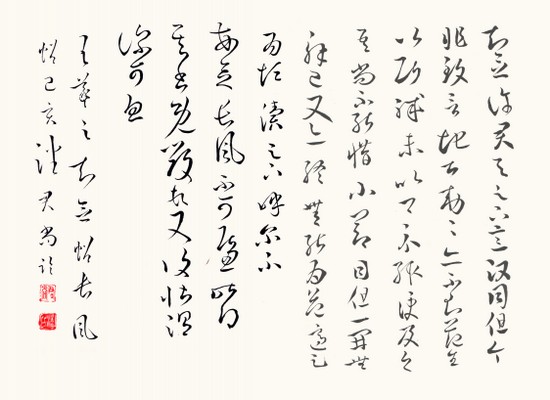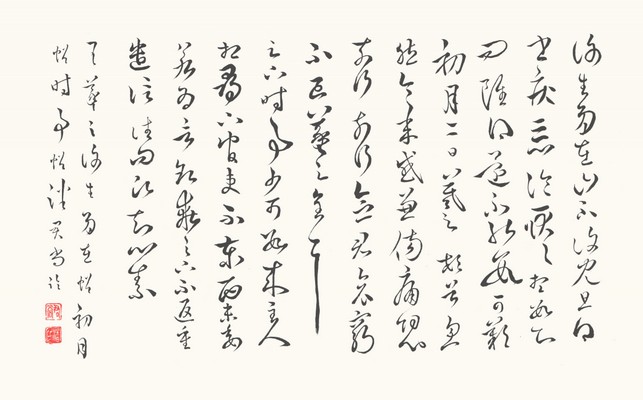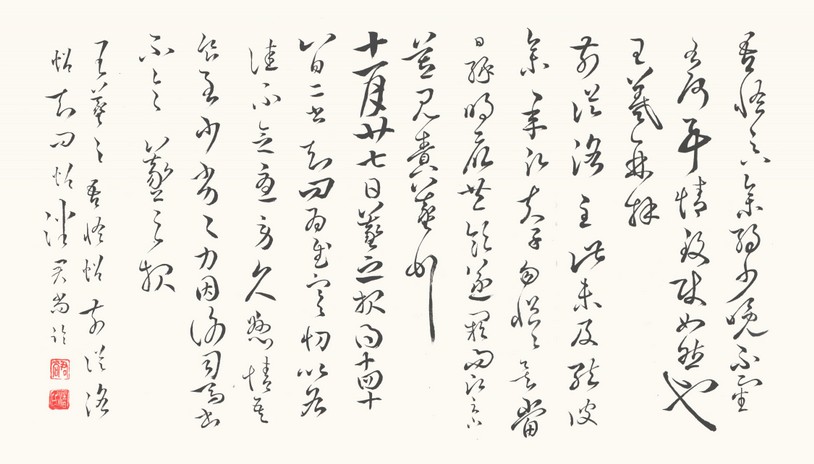Galleries and Translations > Models of Masterpieces > Models of miscellaneous Masterpieces by Wang Xizhi (part VII) 臨王羲之諸法帖 (第七部份)
Models of miscellaneous Exemplary Masterpieces by Wang Xizhi (part VII) 臨王羲之諸法帖 (第七部份)
Historical information
(I)
Wang Xizhi (王羲之) is often considered to be the most outstanding Chinese calligrapher of all time and is regarded as “The Sage of Calligraphy (書聖)” in China and Japan. Born in 303AD in an upper-class aristocratic family, Wang Xizhi started learning Chinese calligraphy at the age of seven from the renowned calligrapher Wei Shuo (衛鑠 or 衛夫人, 272-349AD). His father, Wang Kuang (王曠, ?-?AD), was a government prefecture chief (太守) and was also a calligrapher. His uncle, Wang Dao (王導, 276-339AD), was the prime minister (丞相) during the reign of Emperor Cheng of the Eastern Jin Dynasty (晉成帝, 321-342AD ). Further biographic information of Wang can be seen on my page regarding Lanting Xu (蘭亭帖).
(II)
The calligraphies presented below are my models of Wang Xizhi's handwriting found in Chunhua Imperial Archive of Calligraphy Exemplars (《淳化閣帖》). Supposedly, these handwritings were short letters and memos scribed by Wang. Although their authenticities are questionable, they are still often regarded as Exemplary Masterpieces (法帖) for calligraphers to study and observe. In the art of Chinese calligraphy, "帖(pronounced as Tie)" refers to an exemplary work that should be studied by all .
(III)
Since the originals in the Chunhua Imperial Archive of Calligraphy Exemplars (《淳化閣帖》) can be parts of or whole letters/memos scribed by Wang, translations that are provided below, if available, may not be entirely precise, for they can be interpreted out of context. Further, whether Wang had actually scribed them remains questionable. Accordingly, scholars should be wary of using these as authentic historical references.
A model of Qi Yue Tie (七月帖)
35 X 37 cm
Click to Enlarge. Reserved, not available in shop.
Qi Yue Tie (七月帖):
Original Classical Chinese: 七月一日羲之白:忽然秋月,但有感嘆。信反,得去月七日書。知足下故羸疾問, 觸暑遠涉。憂卿不可言。吾故羸乏,力不具。王羲之白。
English: On the 1st day of the 7th month Xizhi narrates to you: Suddenly, it is the first month of autumn, and I have nothing but sighs. When the messenger returned, I received your letter of the 7th of last month. I gather you are still sickly since you contracted “Heat” on your long journey. I am worried for you more than I can say. I am still frail and worn out, always feeling exhausted. Wang Xizhi narrates. (Translated by Antje Richter & Charles Chace in The Trouble with Wang Xizhi: Illness and Healing in a Fourth-Century Chinese Correspondence (T’oung Pao 103-1-3 (2017) 33-93), edited by KS Vincent Poon).
A model of Dou Xia Tie (都下帖) and Xie Guang Lu Tie (謝光祿帖)
35 X 60 cm
Click to Enlarge. Reserved, not available in shop.
Dou Xia Tie (都下帖):
Original Classical Chinese: 得都下九日書。見桓公當陽去月九日書。久當至洛,但運遲可憂耳。蔡公遂委篤,又加廗下,日數十行,深可憂慮。得仁祖廿六日問,疾更危篤,深可憂!當今人物眇然,而艱疾若此,令人短氣。
English: NA. The entire phrase may not be translated, for the context in which it was written is unknown or uncertain.
Xie Guang Lu Tie (謝光祿帖):
Original Classical Chinese: 謝光祿亦垂命,可憂,念念。一朝奄忽,傷入懷。今年彫落,可哀歎。
English: NA. The entire phrase may not be translated, for the context in which it was written is unknown or uncertain.
A model of Cu Shu Tie (徂暑帖), Yue Ban Nian Zu Xia Tie (月半念足下帖), Zhang Su Tie(長素帖), and De Jing Yu Tie (得敬豫帖)
35 X 58 cm
Click to Enlarge. Reserved, not available in shop.
Cu Shu Tie (徂暑帖):
Original Classical Chinese: 徂暑感懷深。得書知足下故頓,乏食差不?耿耿。吾故爾耳,未果為結。力不具,王羲之。
English: NA. The entire phrase may not be translated, for the context in which it was written is unknown or uncertain.
Yue Ban Nian Zu Xia Tie (月半念足下帖):
Original Classical Chinese: 月半,念足下窮思深至,不可居忍。雨濕,體氣各何如?參軍得針灸力不?甚懸情。當深寬割,晴通省苦,遣不具。王羲之白。
English: Thinking of you at mid-month, I am overwhelmed by an exhaustive longing that I can hardly bear. How is everyone’s health in this rainy, humid weather? Did the
Adjutant respond to acupuncture and moxibustion? I miss you very much. You should seriously relax yourself. When the weather clears up, I will call upon you. I shall not elaborate more in this letter to you. Wang Xizhi narrates. (Translated by Antje Richter & Charles Chace in The Trouble with Wang Xizhi: Illness and Healing in a Fourth-Century Chinese Correspondence (T’oung Pao 103-1-3 (2017) 33-93), edited by KS Vincent Poon).
Zhang Su Tie(長素帖):
Original Classical Chinese: 長素差不懸耿,不大佳也。
English: NA. The entire phrase may not be translated, for the context in which it was written is unknown or uncertain.
De Jing Yu Tie (得敬豫帖):
Original Classical Chinese: 得敬豫九日問,故進退憂之深。
English: NA. The entire phrase may not be translated, for the context in which it was written is unknown or uncertain.
A model of Chi Nen Tie (知念帖) and Chang Feng Tie (長風帖)
35 X 49 cm
Click to Enlarge. Reserved, not available in shop.
Chi Nen Tie (知念帖):
Original Classical Chinese: 知念許君,與足下意政同。但今非致言地,甚勅一勅。亦不知范生以居職未?以卿示,輒便及之。吾尚不能惜小節目,但一開無解已,又亦終無能為益。適足為煩瀆。足下呼爾不?
English: NA. The entire phrase may not be translated, for the context in which it was written is unknown or uncertain.
Chang Feng Tie (長風帖):
Original Classical Chinese: 每念長風,不可居忍。昨得其書,既毀頓,又復壯謂,深可憂。
English: NA. The entire phrase may not be translated, for the context in which it was written is unknown or uncertain.
A model of Xie Sheng Duo Zai Tie (謝生多在帖), Chu Yue Er Ri Tie (初月二日帖), and Shi Shi Tie (時事帖)
35 X 57 cm
Click to Enlarge. Reserved, not available in shop.
Xie Sheng Duo Zai Tie (謝生多在帖):
Original Classical Chinese: 謝生多在山下不復見。且得書。疾惡冷,耿耿。想數知問,雖得還,不能數,可嘆。
English: NA. The entire phrase may not be translated, for the context in which it was written is unknown or uncertain.
Chu Yue Er Ri Tie (初月二日帖):
Original Classical Chinese: 初月二日羲之頓首。忽然此年,感逺兼傷情。痛切心,奈何奈何!念君哀窮,奄經新。故仰慕崩絶,豈可堪忍!比各何似相憂不忘,當深消息以全勉為大。僕衰老,殆是日不如日。力知問。王羲之頓首。
English: NA. The entire phrase may not be translated, for the context in which it was written is unknown or uncertain.
Shi Shi (時事帖):
Original Classical Chinese: 足下時事少,可數來。主人相尋下官吏不? 東西未委,若為言敘乖,足下不返,重遣信往問。願知心素。
English: NA. The entire phrase may not be translated, for the context in which it was written is unknown or uncertain.
A model of Wu Guai Tie (吾怪帖), Qian Cong Luo Tie (前從洛帖), and Zhi Wen Tie (知問帖)
35 X 62 cm
Click to Enlarge. Reserved, not available in shop.
Wu Guai Tie (吾怪帖):
Original Classical Chinese: 吾怪足下參朝少晚,不審有何事,情致使如然也。王羲之再拜。
English: NA. The entire phrase may not be translated, for the context in which it was written is unknown or uncertain.
Qian Cong Luo Tie (前從洛帖):
Original Classical Chinese: 前從洛至此,未及就彼參承,願夫子勿悒悒矣。當日緣明府共飲,遂闕問,願足下莫見責。羲之頓首。
English: NA. The entire phrase may not be translated, for the context in which it was written is unknown or uncertain.
Zhi Wen Tie (知問帖):
Original Classical Chinese: 十一月廿七日羲之報:得十四、十八日二書,知問為慰。寒切,比各佳不?念憂勞,久懸情。吾食至少,劣劣!力因謝司馬書。不具。羲之報。
English: On the 27th day of the 11th month Xizhi reports: I have received your two letters of the 14th and 18th. To hear from you was a comfort to me. The cold is piercing. Is everyone in your family in good health these days? Thinking of you, I am worried and weary. I have missed you for too long. I am eating extremely little, and I am very weak. I am mustering all my strength to respond to Marshal Xie’s [i.e., Xie An] letter. I shall not elaborate more. Xizhi reports. (Translated by Antje Richter & Charles Chace in The Trouble with Wang Xizhi: Illness and Healing in a Fourth-Century Chinese Correspondence (T’oung Pao 103-1-3 (2017) 33-93), edited by KS Vincent Poon).
